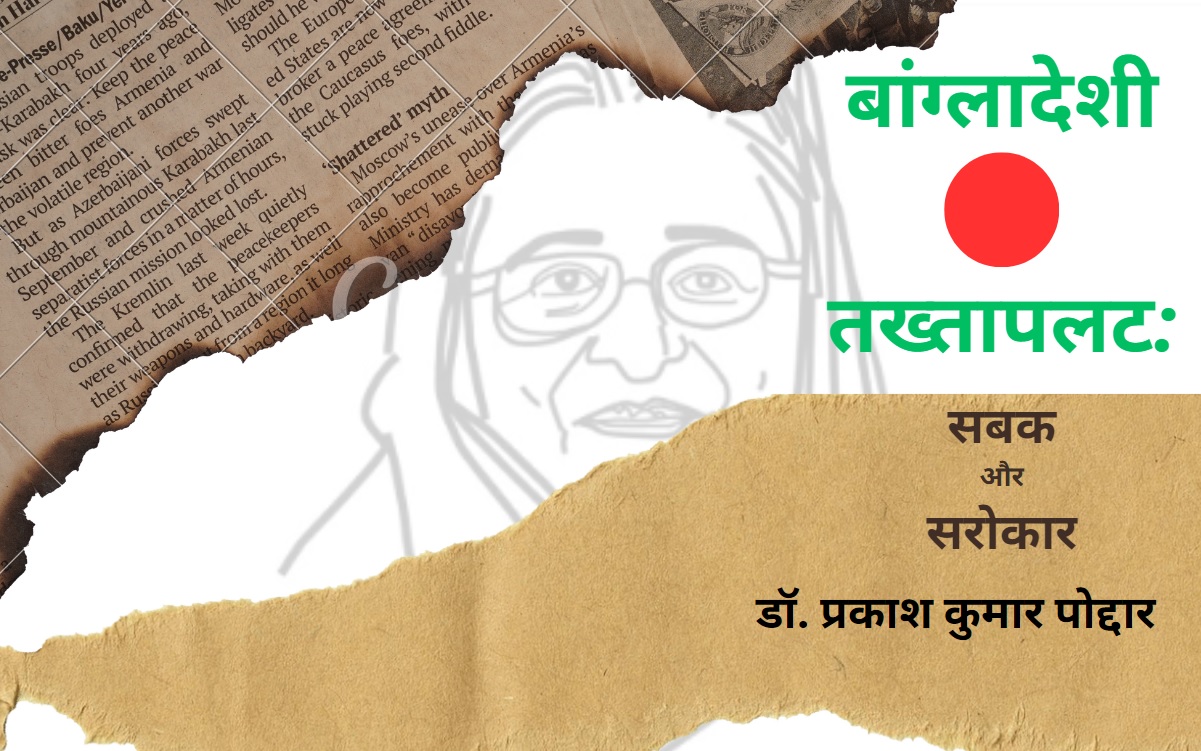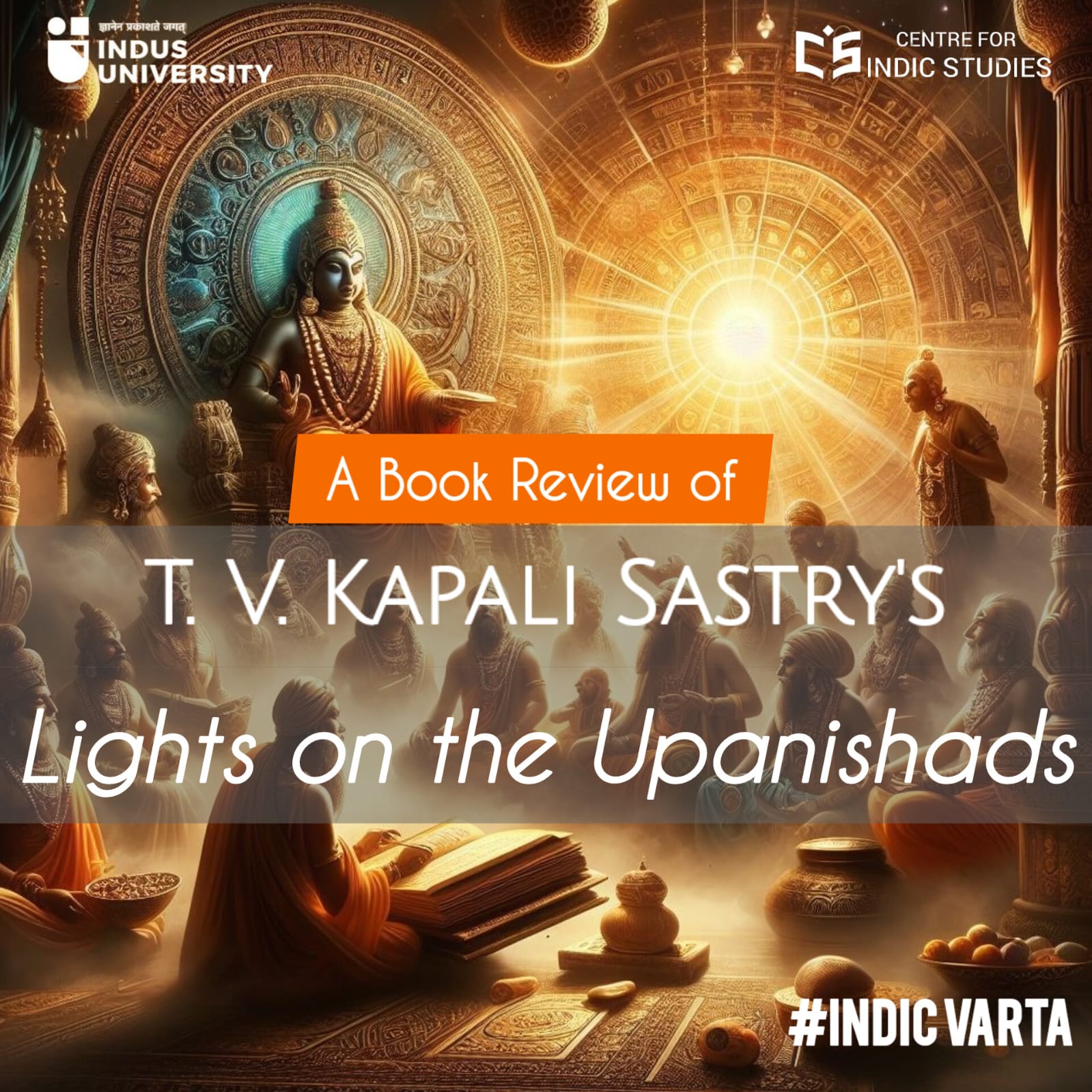- Visitor:67
- Published on:
Sakti Worship in North-East India: A Historical & Cultural Perspective Part-II
In the face of these and numerous other challenges, it has now become all the more important to work towards the preservation of the traditional systems of religious beliefs and practices of different groups and communities of people in the North-East. It is also important to understand the fact that although influenced by various local elements, these practices and beliefs are not different from Sanatan Vedic practices.
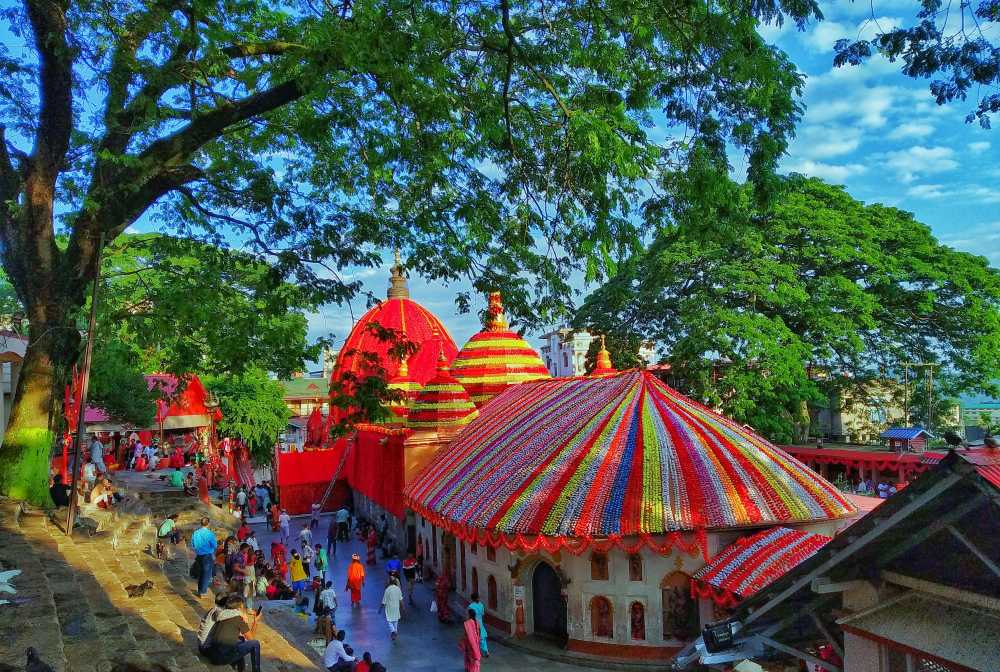
Ancient Naga Faith Systems of Sákti Worship
In 2015, a total of 65 Durga Puja pandals were organised in different places of Dimapur and Kohima, largely by members of the Marwari Bania community in Nagaland. But, coming to 2021, the number reduced to 43, due to vehement opposition from various Christian groups and organisations. This fact alone speaks a lot about the losses that we have been incurring as a society since the British first set their foot in Bharat. Today, Nagaland is known as “the only predominantly Baptist state in the world” with more than 96% of the Naga population identifying themselves as Christian.
Christianity came to Nagaland in the mid-19th century with the arrival of the British and Christian missions from Meghalaya and Assam. However, contrary to the popular belief that all Nagas are Christians, there exist till this date several groups of Nagas such as Rongmei Nagas, Zeliangrong Nagas, Zeme Nagas, etc. not only in Nagaland but in a few areas of Assam as well, who have still held on to their traditional religious belief systems and practices. There are about 50 non-Christian Naga families at a village called Viswema, a village of Angami Nagas situated 22 kilometres south of Kohima, bound on the west by the pristinely beautiful Dzukoú valley.
These Angami Naga families are still adherents of the traditional belief systems that the Nagas followed before the advent of Christianity in Nagaland. They take immense pride in their ancestry and consider the norms and rituals practised by their forefathers as sacred. They have a system known as genna, which are a set of intricately evolved religious beliefs and rituals, associated with different aspects of do’s and dont’s for people of different genders and age-groups. This culture of the non-Christian Nagas has been sustained through oral traditions that have passed through several generations.
To understand such religious belief systems through Western academic vocabularies such as ‘animism’ or ‘nature worship’ can provide only a partial, one-sided understanding of the multidimensional nature of Sanatan Hindu traditions that have developed in accordance with the unique local and geographical characteristics of a particular region. One such religious belief system which is still in prevalence among the non-Christian population of Angami Nagas is Kúpenuopfú, who is worshipped as the Creator through various oblations, sacrifices, and chants. Kúpenuopfú has a female connotation among the Angamis, as the one who is responsible for the process of life-giving, i.e. birth or creation. This can be loosely translated as Sákti.
Kúpenuopfú, it is believed, incorporates both masculine and feminine aspects of Creation, i.e. Síva and Sákti. Men and women in Naga families who follow Kúpenuopfú have their own different set of rites and rituals, which they are expected to adhere to. Women are responsible for conducting the main religious rituals and observe fasting. The chief priest, usually the eldest member in the community, announces the rules for the day at dawn and anyone who does anything that is prohibited as per the religious rules and regulations, is meted out the appropriate punishment. Traditionally, both feasting and fasting play a significant socio-cultural role in the lives of the Nagas even today.
An important aspect of Kúpenuopfú is that there is no binary concept of virtue or sin unlike Christianity. It is not considered a sin if a mistake is committed unknowingly. However, it becomes a grave sin if the mistake is committed knowingly and genna is not observed. Before the advent of Christianity, the Angami Nagas also used to worship Miawenúo, a Devi who was believed to grant her devotees’ wishes. The Sumi Nagas worshipped another female deity called Litsaba, who was believed to protect crops from pest attacks and also bless her devotees with good reproductive health. Traditionally speaking, Litsaba is invoked during the annual post-harvest festival called Tuluni observed in the month of July. It is forbidden for anyone to work in the fields that day.[1]
Among the non-Christian Zeliangrong group of Nagas, the Zeme Nagas worship a male deity called Rampáube along with his female consort Tengrángpui who is invoked as the Sákti. Non-Christian Zemes believe that Rampáube and Tengrángpui reside at Mount Páuná (Nagaland’s third highest peak), which incidentally happens to be the home of a ginseng-like medicinal herb believed to bring the dead back to life. There is also a small section of the Zeliangrong Naga community in Assam’s Silchar who worship Síva as Bhubán Baba at the sacred Bhubán cave, associated with the Naga spiritual leaders Haipou Jadonang and Rani Gaidinliu. Even today, the Zeliangrong Nagas of Silchar celebrate a grand religious festival on the auspicious annual occasion of Maghi Purnima at the Naga Bísnu temple (also known as Naga Bísnu Rákái) situated atop the Bhubán hills.
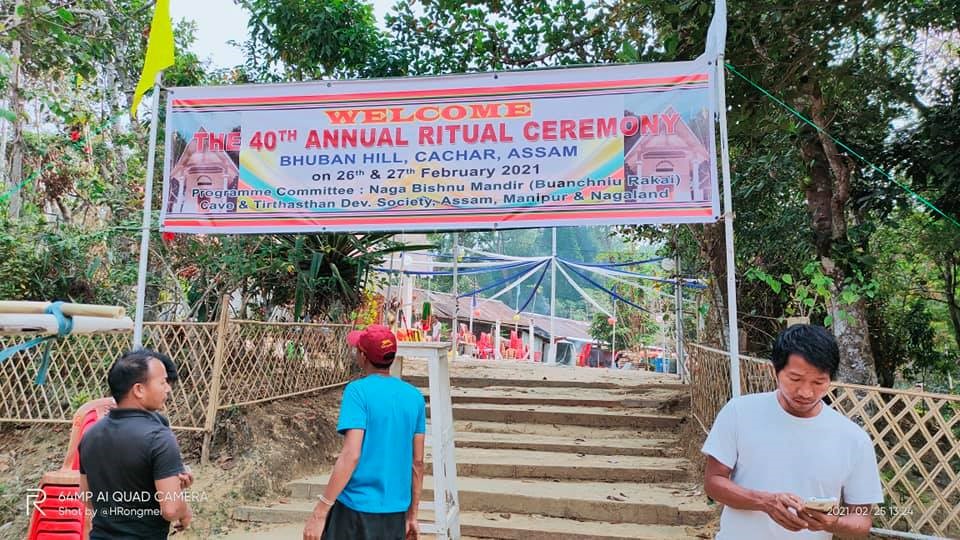
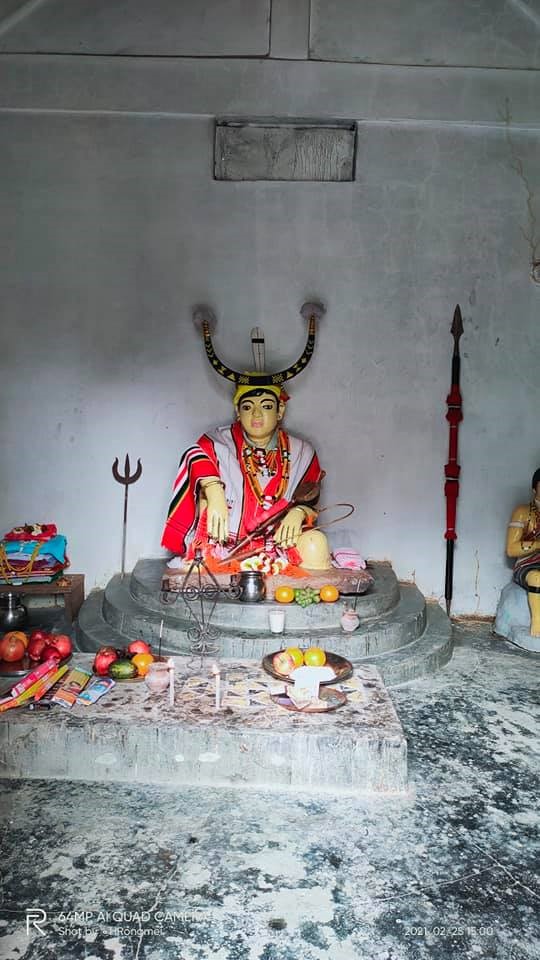
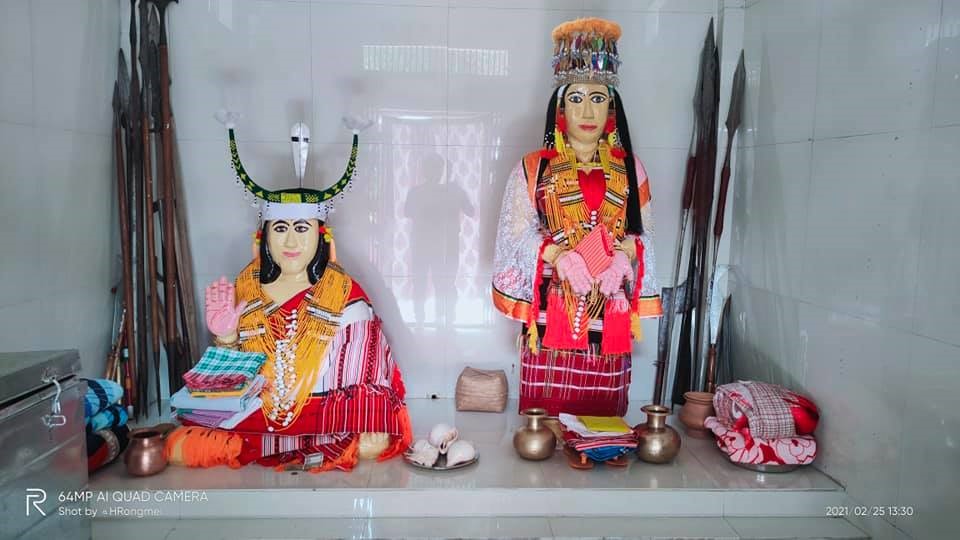
The word Bhubán is a derivative of the Rongmei Naga word Púbúan which refers to Apoubaomei Bhuanchániu, one of the Devtás worshipped by the Zeliangrong Nagas.[2] Púbúan/Bhubán hill is believed to be the abode of Apoubaomei Bhuanchániu, in whose honour an annual pilgrimage is observed on the occasion of Maha Sivrátri under the guardianship of elders of the Sanatan followers of the Zeliangrong Naga community spread over Assam, Nagaland, and Manipur. Apoubaomei Bhuanchániu is worshipped at the cave of Bhubán Baba located in the Bhubán hills. This cave is commonly known to the outside world as Naga cave. In the dense forests of the Bhubán hills, archaeological remnants of several Rongmei Naga villages which existed in the past, have been found.
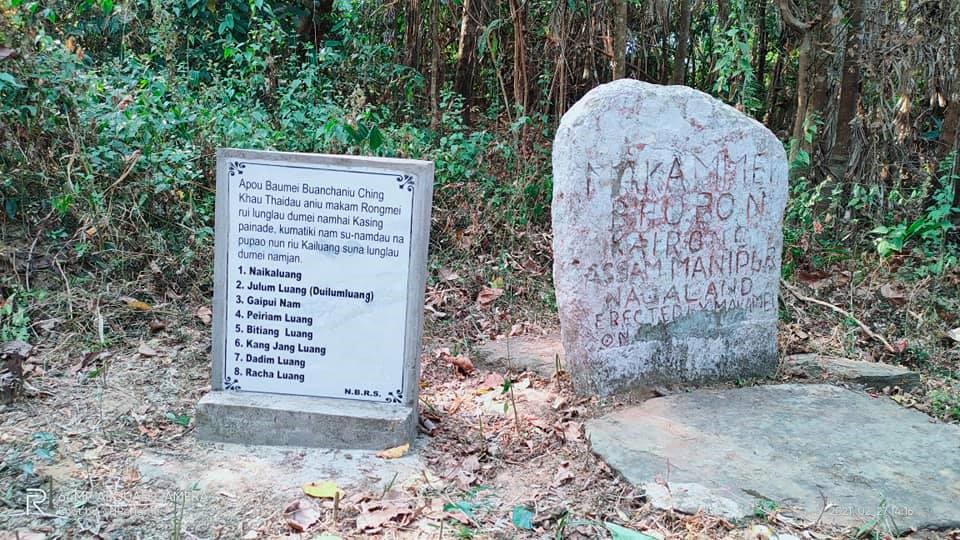
It may be recalled here that the Manmasi National Christian Army (MNCA), a Christian insurgent outfit based in the North-East, was charged with forcing the Hindu Zeliangrong Nagas of Bhuban hills, Silchar to convert at gunpoint in the year 2009. Seven or more Christian radicalised youths belonging to the Hmar vanavasi community, all dressed in black with a red cross on their back, along with arms, assault weapons and rifles, had visited Bhuvan Pahar in Silchar and pressurised the local population (around 700 Hindu families at present, and also consisting of a significant section of non-Christian Zeliangrong Nagas) to convert into Christianity. When the locals refused, the rebel leaders desecrated their temples (around 8) by painting symbols of crosses on the walls with their own blood, claiming that it represented their living ‘warrior God’ or Jesus Christ.

Later, the Sonai Police, along with the 5th Assam Rifles, arrested 13 members of the MNCA, including their Commander-in-Chief. Guns and ammunitions were also seized. It may be noted here that Haipou Jadonang, the Hindu Naga leader and freedom fighter, had worshipped Visnu and another local deity called Tingkao Ragwang at a cave in the Bhuvan hills. Hence, this cave is considered as a sacred spot by the Zeliangrong Nagas who worship Visnu as the chief deity of welfare and all-round prosperity of men and other living beings. Haipou Jadonang belonged to the Rongmei Naga community, which broadly falls under Zeliangrong that represents a combination of four cognate groups of the Nagas – Zemei, Liangmei, Rongmei, and Inpui. In the Zeliangrong Naga religious pantheon, Visnu is known by different names such as Monchanu, Bonchanu, Bisnu, Buisnu, etc.
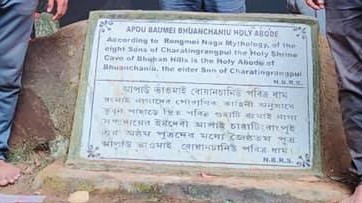
Ma Tripura Sundari’s Abode in Agartala, Tripura
Devi Tripurasundari is one of the deities belonging to the Dásá Máhávidyas. She is also worshipped as the most potent incarnation of the Devi, or simply the ságuna-roopa of Adi Parasákti (the Supreme Being in Sáktitva, and also the feminine aspect of Para Brahman). Devi Tripurasundari is hailed as a great unifier in Sáktism. She, along with Sada-Siva (or Tripuratanka) is responsible for the Pancha-Krityas – sristi or creation, sthithi or protection, samhara or destruction, thirodhana or concealment of the world in maya, and anugraha or final liberation. Devi Tripurasundari is worshipped in many temples across India, noteworthy being the Tripura Sundari Mandir, located in the ancient city of Udaipur, about 55 km from Agartala, Tripura.
The Tripura Sundari Mandir is one among the 52 Sákti Peethas of Bharat; and, according to the popular story of Sati’s death by self-immolation, her right leg had fallen here. Ma Tripura Sundari is worshipped by all people of Tripura, from the Twipras (Debbarmas, Reangs, Jamatias, Murasings) who are the original inhabitants of Tripura, the Bengalis of Tripura, to the Tripura royal family. According to the Brahmanda Purana, Visnu became the elder brother of Parvati in her swaroop as Ma Tripura Sundari, and helped her to be the consort of Siva. Hence, perhaps because of this reason, along with Ma Tripura Sundari/Tripuresvári at the Tripura Sundari temple, Visnu is also worshipped in the form of a sáligrama.
The Tripura Sundari temple is built atop a hillock, which is in the shape of the back of a tortoise (kurma). In the Sákta parampara of Sanatan Dharma, this is believed to be one of the most sacred sites for a Sáktipeeth to be located. According to a story associated with the temple and as written in the Rajmala, king Dhanya Manikya who ruled over Tripura in the closing years of the 15th century, had a revelation one night in a dream in which Ma Tripura Sundari instructed him to shift her murti from Chittagong (in present-day Bangladesh) and initiate her worship on the hillock near Udaipur, the then capital of the kingdom.
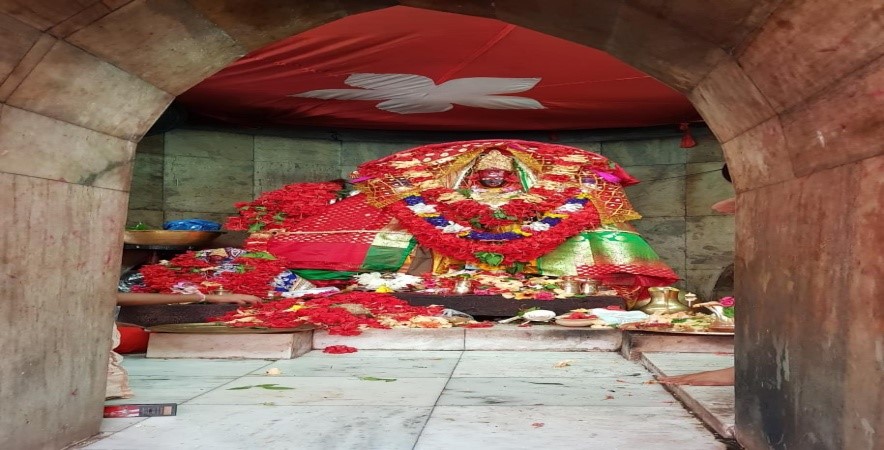
The king found out that a temple on the hillock was already dedicated to Visnu. He was in a dilemma, unable to decide how a temple dedicated to Visnu could have a murti of Sákti. The following night, the divine vision was repeated again, with Ma Tripura Sundari coming along with Brahma, Visnu and Máheswara. The king understood that Visnu and Sákti were different swaroops of the same Brahman. Thus, the temple of Ma Tripura Sundari in present-day Agartala came into being. The temple of Ma Tripura Sundari is the place of convergence of Vaisnava and Sákta followers of Tripura.[3]
The Chaturádása temple (Chaturádása literally meaning ‘the temple of 14 deities’) is another popular Hindu religious place of worship in Tripura where 14 Kokborok deities (important deities of the Tripura royal family) are worshipped. These deities include – Brahma, Visnu, Siva, Durga, Laksmi, Kartikeya, Saraswati, Ganesa Samudra, Prithvi, Agni, Ganga, Himadri, and Kamadeva. They are known by the local names of Burasa, Lampra, Bikhatra, Akhatra, Thumnairok, Sángroma, Bonirok, Twima, Songram, Mwtaikotor, Mailuma, Noksumwtai, Swkalmwtai, and Khuluma respectively. The historical belief is that the mother of Raja Trilochan who was the king of Tripura, had saved these 14 deities from being killed by a wild buffalo when she had gone to bathe in the Maharani river. The deities eventually killed the beast with her help.
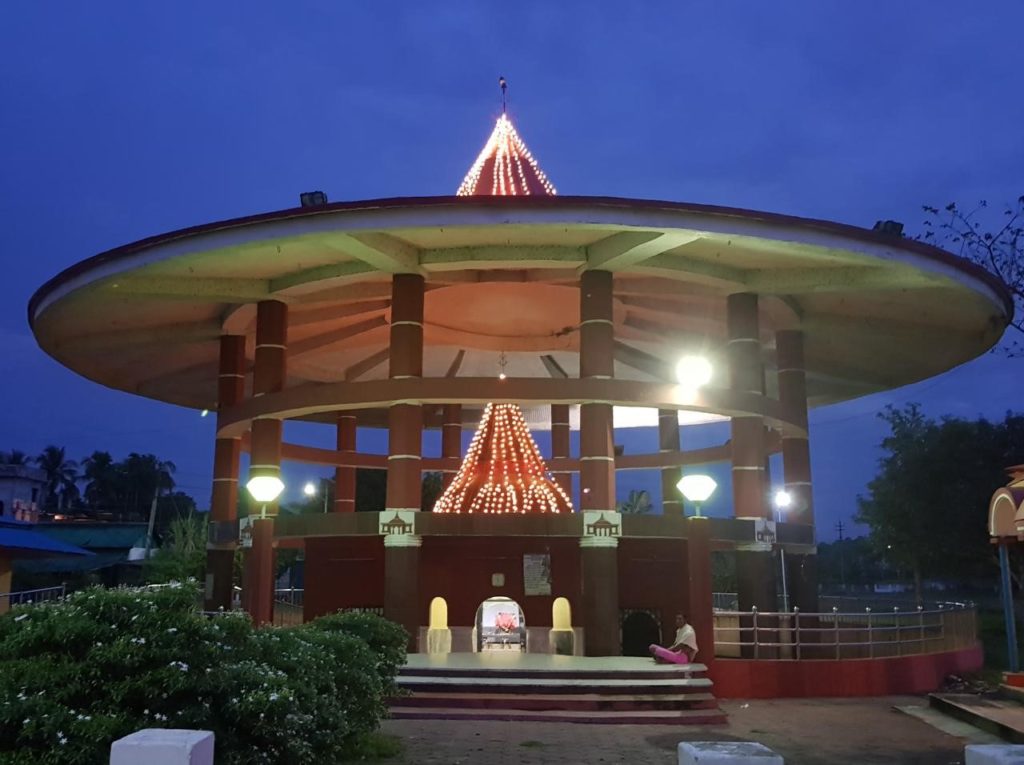
Happy with the efforts of the king’s mother, the 14 deities visited King Trilochan’s palace in Udaipur. The royal family offered Puja to the fourteen deities and also sacrificed wild buffaloes. Kharchi Puja is a century-old, important Hindu religious festival celebrated at this temple. A beautiful amalgamation of Sanatan Hindu and local Kokborok customs, Kharchi Puja is celebrated annually during the month of Aashad (June-July), 15 days after the end of the Ambubachi celebrations at the Ma Kámákhya Sáktipeeth. The festival stretches for around a week, but sometimes even more. During this Puja, goats, pigeons, and buffaloes are sacrificed to propitiate the Devi with blood. Kharchi Puja is believed to be a way of purifying Bhúdevi or Mother Earth after Ambubachi.
With the onset of Kharchi Puja, thousands of people from not only Tripura but also various other parts of the country could be seen circling around the Chaturádása Devta temple. The word Kharchi is derived from two different words – Khar which means sin; and, Chi meaning cleanliness. Together, it means the cleansing of sins committed by the people. The rituals of Kharchi Puja begin after the Raj chantai (mukhya Pujari) and his fellow Pujaris take the 14 deities to the nearby Saidara river, which is followed by a bath in the sacred waters. The deities are then brought to the temple, decorated with flowers and vermilion applied to their foreheads.
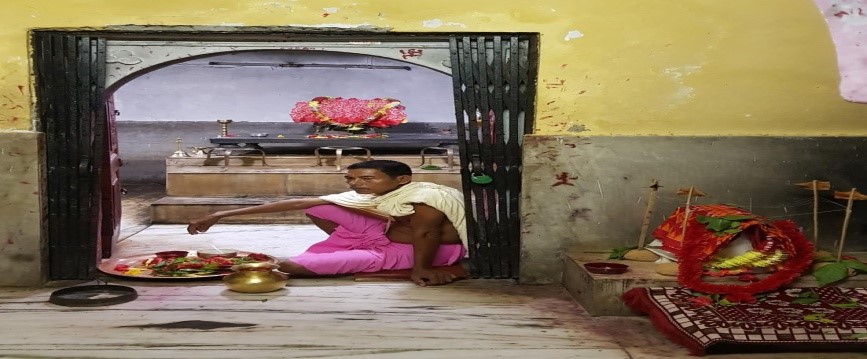
The popular belief is that Kharchi Puja was started in 1760 AD by the then Maharaja of Tripura Krishna Manikya Bahadur. Since then, this festival became an annual celebration in Tripura, continuing in full spirit till the present times. Cultural programs are organized in the evening during the entire 7-day period of the celebration of Kharchi Puja. A fair is also organized to commemorate the occasion. Two weeks after the end of Kharchi Puja in Tripura, another popular festival known as Ker Puja is celebrated in the honour of Vaastu Deváta. People believe that the former rulers of the past used to perform this Puja for the general welfare and well-being of the people of their state.
Ker is considered as the guardian deity of Vastu Deváta. A large piece of bamboo bent in a particular fashion assumes the image of Ker, and it is fast rotated to produce a sound. The literal meaning of Ker is a boundary or specified area from where no one is allowed to enter or come out for two and a half days during the celebration. The chantai or mukhya Pujari is regarded as the king of the occasion. Celebrated amid great fanfare with financial support from the state Government of Tripura, Ker Puja is associated with various traditional beliefs and practices of the people of Tripura.
The religious rituals of the Puja begin early in the morning, with offerings of meat and blood being made to the deity. Expectant mothers, aged and ailing people are shifted to the neighbouring villages before the beginning of the Puja ceremonies. People in the surrounding areas are not allowed to step beyond the boundary till the Puja is over. If any person enters the boundary by mistake, he/she is not allowed to move back from the place. The devotees engage in dancing and feasting in the evening after the Puja comes to an end. It may be mentioned here that Ker Puja was originally initiated to protect people from diseases, destitution, and external aggression. Tripura police personnel fire guns before the beginning of the rituals of Ker Puja and as well as at the end of it.
Because of religious proselytisation activities of the Christian missionaries in the North-East, the traditional ways of lives and belief systems of the people here have borne some of the worst impacts. Some have managed to survive, while others have been dying a slow death. The Sanatan Hindu heritage of North-East India is a less talked-about subject, and the worship of Sákti in different forms constitutes an integral part of this heritage. Prior to the advent of Christianity in the North-East, each state of this region had their own unique system of worship of local Devis and Devátás rooted in their own traditions and religious belief systems. Both Sivá and Sákti constituted a very important part of this system which was developed holistically on the well-being of all in the Universe.
It would not be a far-fetched argument to say that the Christian-dominated states of Nagaland, Meghalaya, and Mizoram have lost these local Dharmic traditions forever. They, however, still continue to survive in neighbouring Arunachal Pradesh, especially among the Noctes, Wanchos, and Apatanis. The Konyak Nagas of Haanhsora Aadorxo Naga Gaon in Sivasagar district of Upper Assam, who follow the Mahapurusiya Naam Dharma tradition of Srimanta Sankardeva, also stand out in this regard. In Tripura, the Hindu Jamatia, Reang, and Hajong communities are continuously battling a daily struggle for survival of their lives and religious belief systems in the face of not just Christian evangelism but also the rapid changing demographic character of the state, perpetrated by illegal immigration from across the border with Bangladesh.
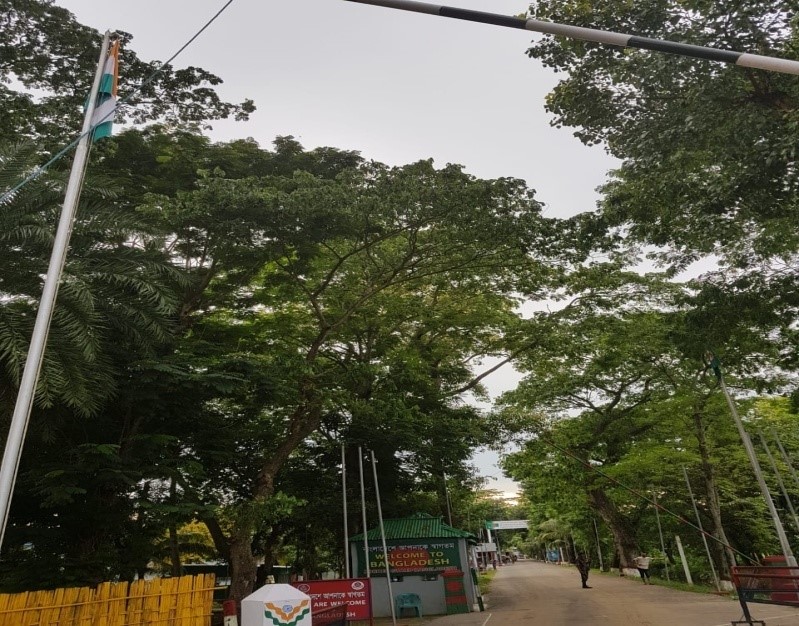
In the face of these and numerous other challenges, it has now become all the more important to work towards the preservation of the traditional systems of religious beliefs and practices of different groups and communities of people in the North-East. It is also important to understand the fact that although influenced by various local elements, these practices and beliefs are not different from Sanatan Vedic practices. At present, Assam, Arunachal Pradesh, Manipur, and Tripura are the only states where Sanatan Dharmic faiths are still in existence. Both the Mahabharata and the Ramayana have been an inseparable part of the history and culture of the North-East. The festivals, different dance forms, and all the surviving Hindu religious places of worship in the North-East are proof enough of this fact.
References
- Amarendra Kr. Thakur. (2014). Resistance to British Power in the Hills of North-East India: Some Issues. Dialogue, Vol. 16, No. 1, pp. 117-128.
- Anup Mahanta. (2018). Kamakhya Temple – Legends and History. Spectrum Publications, Guwahati : Delhi.
- B.B. Jamatia. (2011). Religious Philosophy of the Janajatis of Northeast Bharat. Heritage Foundation, Guahati, Assam.
- Birendranath Datta. (2012). Cultural Contours of North-East India. Oxford University Press, New Delhi.
- C.K. Malsom (ed). Socio-Cultural and Spiritual Traditions of Tripura. Heritage Foundation, Guwahati, Assam, 2011.
- Dutta Baruah. (1952). Kalika Puran: Hara-Gaurir Vivaaha. Nalbari, Kamrup, Assam.
- Dr. B. Chakravarti. (1963). The Nagas. Self-Employment Bureau Publication, Calcutta.
- Praphulladatta Goswami. (1995). Festivals of Assam. Anundoram Borooah Institute of Language, Art & Culture, Assam (India).
- Rai Bahadur K.L. Barua. (2020). Early History of Kamarupa – From the Earliest Times to the End of the Sixteenth Century. LBS Publications, Guwahati, Assam.
- Sir Edward Gait. (1926). A History of Assam. Thacker, Spink & Co., Calcutta.
- S.L. Baruah. (1995). A Comprehensive History of Assam. Munshiram Manoharlal Publishers, New Delhi.
- Hidden Shaktipeeth in Meghalaya and Maratha-Sylheti Connection. Barak Bulletin. https://www.barakbulletin.com/en_US/hidden-shaktipeeth-in-meghalaya-writes-samujjal-das/
- Megalithic Remnants, Nartiang (Meghalaya). Eastern Panorama. https://www.easternpanorama.in/index.php/special-section/116-megalithic-remnants-nartiang-meghalaya
- Jayanthi Nartiang Durga Temple Meghalaya: 51 Shakti Peethas. Temples at India. https://templeatindia.blogspot.com/2015/12/jayanthi-nartiang-durga-temple-meghalaya.html
- The Khasis as Hindus. Economic and Political Weekly. Vol. 51, Issue No. 10, March 2016. https://www.epw.in/journal/2016/9/web-exclusives/khasis-hindus.html
- Nartiang Durga Shakti Peethi. Goddess Vidya. https://vedicgoddess.weebly.com/temples-of-india-blog/nartiang-druga-shakti-peethi
- Revitalisation of Indigenous Faith in Northeast Bharat, Heritage Explorer. Vol. XIX, No. 7, August 2020. Heritage Foundation, Guwahati, Assam.
- Sacred Places of Northeast Bharat, Heritage Explorer. Vol. XIII, No. 08, August 2014. Heritage Foundation, Guwahati, Assam.
- http://www.assamtimes.org/social/3112.html
All photographs used in the article are from the author’s personal collection.
Acknowledgement: A special note of thanks to the library staff of the Department of Historical and Antiquarian Studies, Guwahati; S. Sarma Baruah and Subhajit Choudhury for helping me with my visits to Meghalaya and Tripura respectively.
[1] Dr. B. Chakravarti. (1963). The Nagas. Self-Employment Bureau Publication, Calcutta.
[2] Ibid.
[3] C.K. Malsom (ed). Socio-Cultural and Spiritual Traditions of Tripura. Heritage Foundation, Guwahati, Assam, 2011, pp. 61-75.
Center for Indic Studies is now on Telegram. For regular updates on Indic Varta, Indic Talks and Indic Courses at CIS, please subscribe to our telegram channel !
- 33 min read
- 0
- 0







